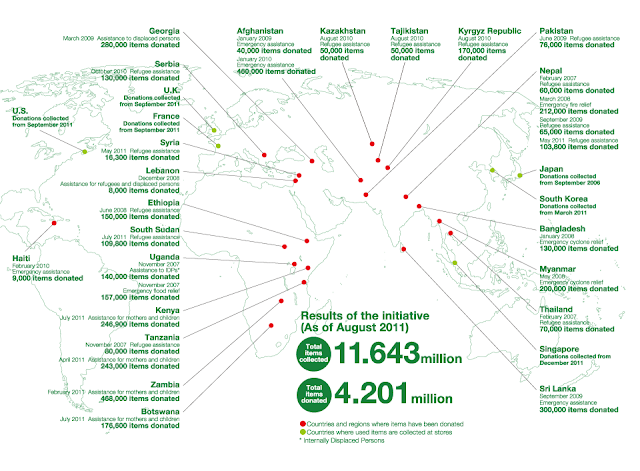Since graphic design needs a lot of materials
for the printed products, the keywords for sustainability in graphic design are
recycling materials as much as possible, use new technology with low toxicity or
use the idea of biomimicry as tools to design or to create materials, encourage
activism to spread sustainable design and so on. I’d like to approach to the possibility
of sustainable design from graphic design point of view, focusing on
the use of material and design activism.
It is a job for a graphic designer to select what
material to use for an outcome of the design like choosing ink and paper to
write or print on. First of all, simply organic things could be selected for
all the materials to reduce chemical impacts. For example, squid or octopus’s
fresh ink could be selected for the ink(post 9/1/2013) and also natural fiber sheet for paper.
Secondary, if I keep it much simple, any natural objects if they could be
easily returned back to the nature such as leaves or stones(post 2/12/2013) could be used
including live creatures, to minimize waste and reduce energy/water use. For instance, leaving honey in letter shape in
public place to attract bees or ants could create message that we can actually
see in the environment and also it disappears naturally after a short while
when the attracted creatures finish eating it(post 1/12/2013). Or could do bring a huge group
of people to stand in specific position so you can see images or words from a
distance. These ideas are all very simple and manageable but it is sometimes
better to go back to the basics in the term of sustainable design.
Because one of the purposes of graphic design is to
send a message to the people in most effective and understandable way, it could
lead an excellent activism, such as inviting famous people to do a campaign,
for spreading the idea of sustainable design. There is a British famous paper
cutting artist called Rob Ryan. He is well known for his delicate beautifully
cut out works with message of love and life. But he hasn’t done anything
related to environmental issue yet (robryan, 2004). Since he is worlds-wide
well known and most of his work uses paper as a main material, I came up with
an idea of inviting him to create a work to announce a campaign of recycling or
minimize waste by using waste paper. It would be visually beautiful and also
quite recognizable what the message is for the audience. Collaboration of waste
paper and talent of Rob Ryan will produces an amazing value to the waste and
could be a strong message of what sustainable design today.
Thinking about sustainability in design is
essential for all the designers because as taking part of producing things, it
is responsible to consider how the product ends up. Also since all the materials are limited on the earth, designers must deal with the limited materials as much
as possible. I am glad that I could have an opportunity to study about this
topic at the same time I study graphic design communication. Therefore I will always keep this point of view in my mind when I work on my design.




























